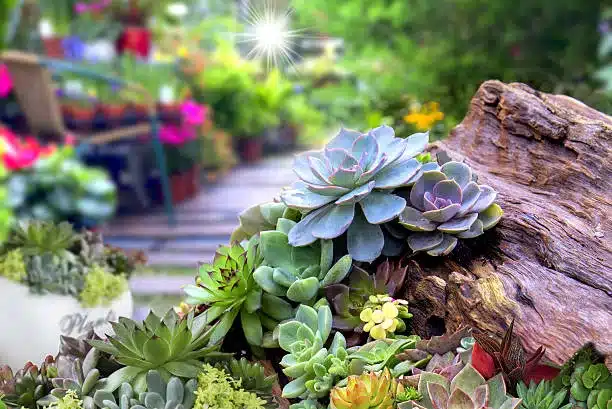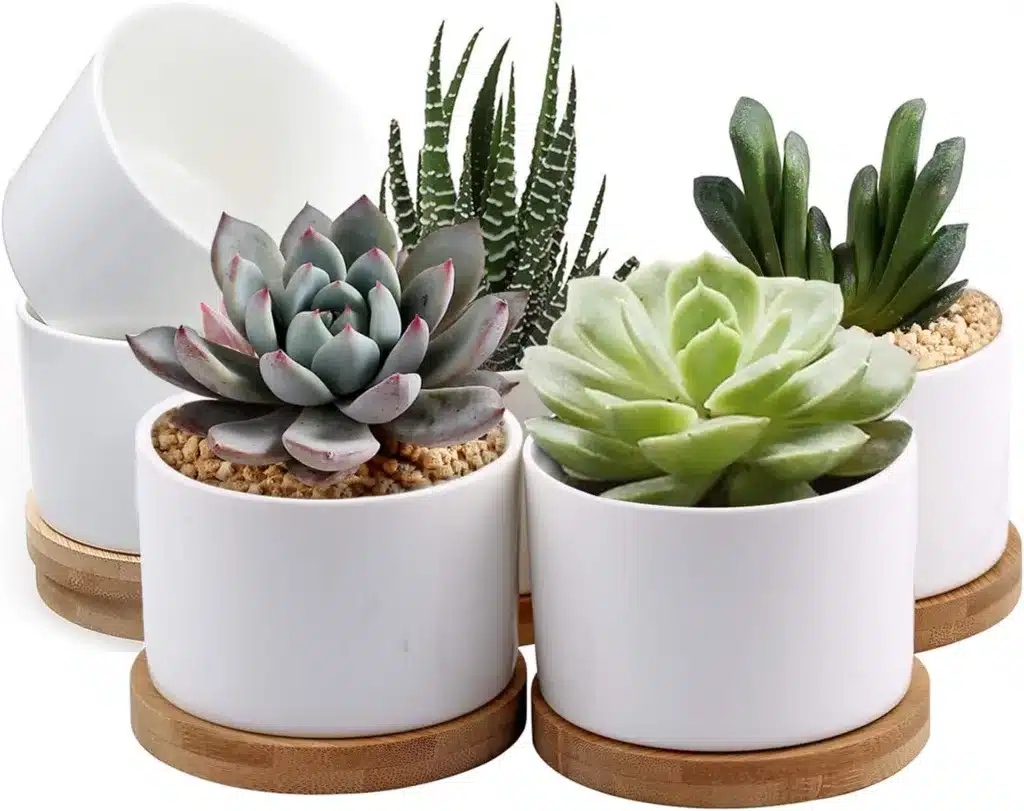In the vast and fascinating world of horticulture, exotic succulents stand out due to their unique beauty and intriguing characteristics. From newbies seeking to add a touch of nature to their homes to seasoned gardeners looking to expand their collections, these intriguing plants offer a whole new world of exploration. In this guide, we’ll unlock seven unbelievable secrets to growing exotic succulents that even the most experienced green thumbs will find insightful!
Understanding Exotic Succulents
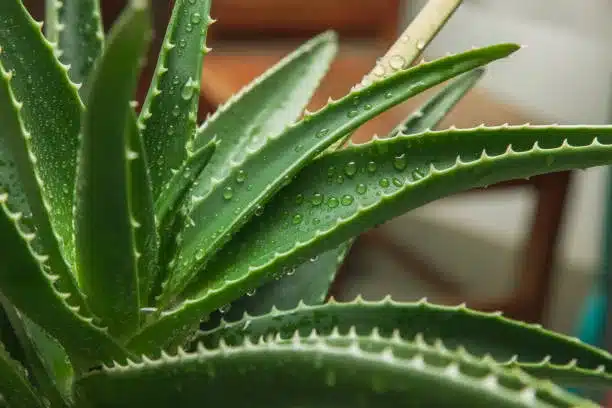
What are Exotic Succulents?
Exotic succulents are an extraordinary assembly of plant species, celebrated for their characteristic thick, fleshy leaves or stems that serve as water reservoirs. These intriguing features have evolved as an ingenious survival mechanism, allowing the plants to store ample water for dry spells and adverse climatic conditions.
Their aesthetic appeal is strikingly unconventional—where else could you find such an array of geometric shapes, vibrant colors, and fascinating textures, all wrapped up in a single plant type? Whether it’s the rosette formations of Echeverias, the windowed tops of Lithops, or the cascading tendrils of Sedum morganianum, exotic succulents offer an unrivaled variety that keeps plant lovers continually captivated.
Their origins span across diverse and sometimes unforgiving habitats, ranging from the arid deserts of Africa to the high plateaus of South America, and even the alpine regions of Europe and Asia. This remarkable adaptability is a testament to the resilience of these plants. Over time, they’ve evolved not merely to survive but to flourish in a vast spectrum of environmental conditions.
Indeed, exotic succulents present a delightful challenge for gardening enthusiasts. Each species, with its specific needs and idiosyncrasies, invites a unique journey of discovery and learning. Whether you’re a beginner seeking a low-maintenance entry into plant care, or a seasoned gardener looking to add to your botanical repertoire, exotic succulents offer rewarding experiences in abundance. With their combination of aesthetic allure, biological intrigue, and varied cultivation requirements, it’s little wonder these plants continue to fascinate and inspire.
Types of Exotic Succulents
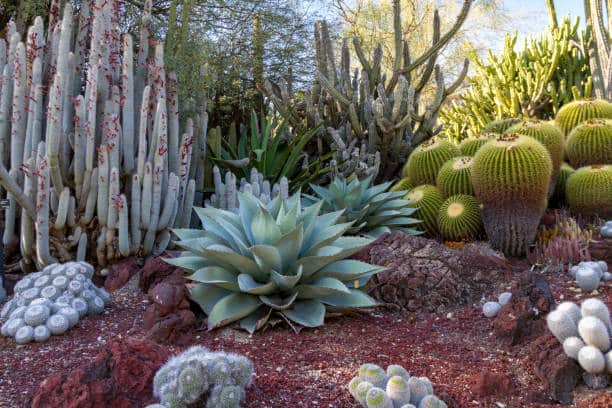
From the brain-like convolutions of Lithops to the rainbow hues of Echeveria and the cascading beauty of Sedum morganianum (better known as the Burro’s Tail), the world of exotic succulents is vast and diverse. The unique charm of each species can add a distinctive touch to any indoor or outdoor garden.
Secret #1: Ideal Lighting Conditions
Exotic succulents adore light. A sunny windowsill with bright, indirect light or a shady spot in the garden could become their favorite place. Remember, different types may have slightly different light preferences, so research your specific plant’s needs for best results.
Secret #2: Perfect Watering Technique
The ‘Soak and Dry’ method
Watering is crucial to succulent care. Most gardeners swear by the ‘soak and dry’ method. Simply put, water your succulents thoroughly, then wait until the soil is completely dry before watering again. This approach mimics the rainfall patterns in their natural habitats and helps prevent root rot.
Signs of Overwatering and Underwatering
Understanding the signs of overwatering (soft, yellowing or blackening leaves) and underwatering (wrinkled, shriveled leaves) can save your exotic succulents from a watery grave or a droughty demise.
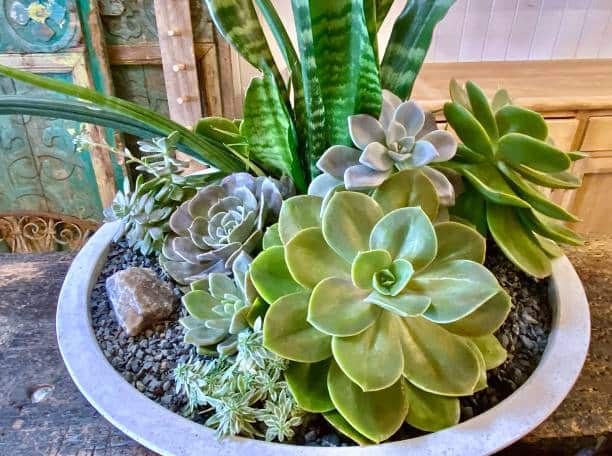
Secret #3: Proper Soil Mix
Exotic succulents prefer a well-draining soil mix. A good rule of thumb is to use a 50/50 blend of organic matter and inorganic gritty material. This combination ensures good drainage while providing the nutrients your succulents need to thrive.
Secret #4: Temperature and Climate Considerations
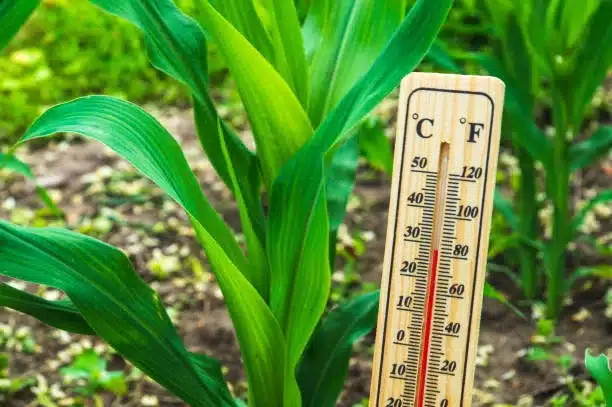
While exotic succulents are hardy creatures, they do have temperature preferences. Most enjoy climates similar to their native habitats—generally between 60°F and 90°F. However, many can survive brief periods outside this range. Remember to protect your plants from extreme conditions, such as intense midday sun or freezing winter nights.
Secret #5: The Art of Propagation
Propagation allows you to multiply your exotic succulent collection easily. Whether from a leaf or a stem cutting, the key is to let the cut part dry out or ‘callous’ before planting it in soil. The process requires patience, but watching a tiny new plant sprout from a single leaf or stem is well worth the wait!
Secret #6: Choosing the Right Container
The container you choose for your exotic succulent can impact its health and growth. A pot that’s too big can lead to water-logging, while one that’s too small might stunt growth. Ensure the pot has adequate drainage and is made from a material like terracotta that allows soil to dry out adequately between waterings.
- Exquisite Design: The ZOUTOG Succulent Pots feature a sleek, minimalist design, with their polished white ceramic finish effortlessly complementing any décor. They’re an elegant way to showcase your succulents or other small plants.
- Bamboo Tray Included: Each pot comes with its own bamboo tray, providing a perfect fit and preventing any water or soil from spilling out, keeping your surfaces clean and ensuring proper water management for your plants.
- Compact Size: With a diameter of 3.15 inches, these mini pots are ideal for housing a variety of small plants, such as succulents, cacti, or herbs. Their compact size makes them a perfect fit for windowsills, desks, tabletops, or any small space that could use a touch of nature.
- Bulk Pack: The pack of 6 pots offers great value for money, allowing you to start a mini garden in your home or office. You can also gift individual pots to friends and family, sharing the joy of indoor gardening.
Secret #7: Protecting Your Succulents from Pests and Diseases
Even the healthiest exotic succulents can occasionally attract pests or fall victim to disease. Regular inspections can help detect issues early. Common culprits include mealybugs, spider mites, and fungal diseases. Treat issues promptly, and remember that prevention is always better than cure!
FAQ Section
In our journey of exploring the delightful world of exotic succulents, many enthusiasts often find themselves curious about the most unique and exceptional members of this plant family. To satisfy your inquisitiveness, here are answers to some of the most frequently asked questions:
What is the most rare succulent?
One of the rarest succulents is the Rose Pincushion Cactus (Echinopsis oxygona). It’s known for its strikingly beautiful, large pink blossoms that contrast with its small, round cactus body. However, it’s crucial to remember that rarity often means a species is endangered, so always ensure that any plants you acquire have been grown sustainably.
What is the most beautiful succulent plant?
Beauty, of course, lies in the eye of the beholder, and with the vast variety of succulents available, it’s hard to crown one as the most beautiful. However, many gardening enthusiasts are captivated by the Echeveria ‘Perle Von Nurnberg’. Its large rosettes of pastel purple leaves, highlighted with pink hues, make it a stunning addition to any succulent collection.
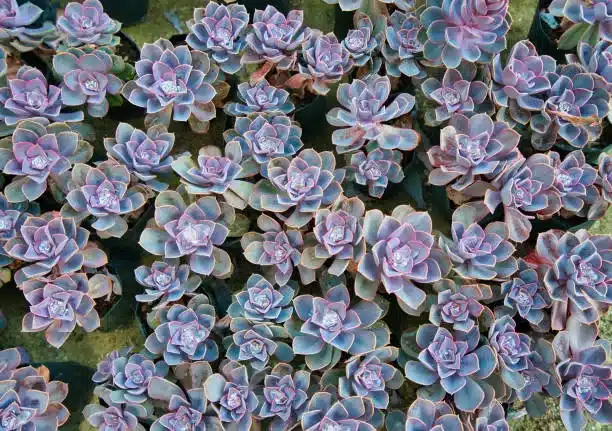
What is the most famous succulent?
Arguably the most famous succulent is the Aloe Vera. Known worldwide for its medicinal properties, Aloe Vera is not only a popular indoor plant but also a staple in many skincare products. Its ease of care and functionality make it a favorite among both gardening novices and experts.
Remember, while it’s exciting to discover the most rare, beautiful, or famous succulents, the joy of growing these plants comes from finding the ones that speak to you and fit your unique care capabilities and environmental conditions. Happy gardening!
Exotic Succulent Conclusion
Armed with these seven secrets, growing exotic succulents can be an enriching and rewarding hobby. Remember, each plant is unique and may require some tweaking of these general care guidelines. Happy gardening, and may your exotic succulents thrive!
For further reading on succulent care, check out this comprehensive guide from the University of California’s Division of Agriculture and Natural Resources.
Check Our Landscape Projects On Facebook
Hi there, I’m Mark Apletree, a gardening enthusiast with a passion for gardening, and gardening tools. I’ll be your go-to guide for all things related to gardening. The purpose of this website is to assist you in selecting the most suitable garden gear that meets your specific requirements.
See All Posts
